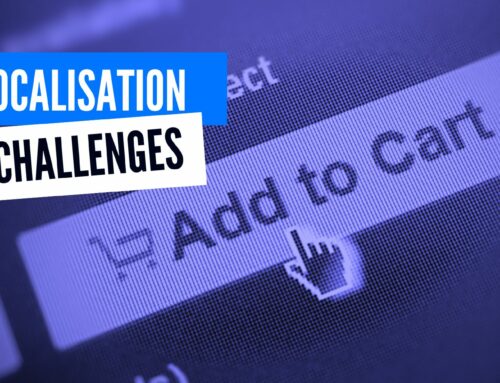Every year Which?, Internet Retailing and other digitally-focused research papers produce annual listicles, categorising the UK’s top 10 best and worst online retailers. 2019 was no different as businesses review their current processes and transformations in preparations for 2020.
Who’s winning?
Including both wholesale, clothing and food-related stores, the top 10 UK online retailers for 2019 (source) were:
- Amazon
- eBay UK
- ASOS
- Argos
- Asda
- Tesco
- Marks and Spencer
- John Lewis
- Curry’s PC World
- Debenhams
Who’s losing?
At the opposite end of the scale are the top 10 worst online retailers (source), listed below:
- Homebase
- DIY.com
- House of Fraser
- Sports Direct
- WHSmith
- Matalan
- Zara
- Go Outdoors
- The Range
- Evans
What *really* makes a digital difference?
Throughout each report, highlighting seamless customer journeys and placing emphasis on usability are core contributors to a business’s overall score. Broken down, the websites with fewer issues are more likely to be within the top 10 best online retailers list, while the websites with more issues are more likely to be within the top 10 worst online retailers list. These issues which contribute to a website performance and usability can be divided into 3 key categories; critical, conversion and UX.
Critical – Issues that entirely stop a customer from performing conversions or completing customer journeys.
Conversion – Issues that hinder customers from performing conversions, however, these issues do not entirely stop the customer.
UX – Issues affect the user experience. For example spelling mistakes.
Looking through the top 3 worst online retailers (Evans, The Range, and Go Outdoors), we identified conversion/UX issues on each website through a quick run-through of key customer journeys. These issues were present on desktop devices, and the two browsers used were Edge and Chrome
The evidence
Evans
Using the Edge browser, we searched through Evans online store searching for issues that would be encountered by a customer looking for Order help.
The UX issue identifies a clear lack of colour contrast for links within the ‘Where’s my order’ textual box. This issue isn’t severely damaging to Evan’s website, however, it does highlight some contrast issues, that were perhaps overseen during automatic testing phases. Contrast issues generally fall under the accessibility guidelines which (if disregarded) can be the source of a legal battle. Read our accessibility help eBook.
Given the context of this issue, this could further agitate customers leading to vocal complaints or a reduced level of customer loyalty. For Evan’s, we suggest running a quick manual accessibility test, as this would highlight similar issues, which automatic testing simply cannot identify.
The Range
Using the Chrome browser on desktop, we identified a layout issue that severely fragments product boxes. This fragmentation results in large gaps of empty space where products should be displayed. We can assume that this type of issue has been caused by an issue that is affecting the coded float property, used when positioning content.
An issue such as this can occur when content is too big for a specific container, resulting in this content being placed in the next available space. In these instances the stepped type layout is present.
Issues like this that affect the layout of a page can be identified through usability testing. Find out more about usability testing here.
Go Outdoors
Go Outdoors presents multiple different issues all evident on one landing page. What is interesting about these issues is that they all come from one source, a problem with the CSS or styling of the page.
The issues are: the visual presentation of links, content blocks missing, improperly sized images and broken social media links. These issues are a mixture of conversion and UX , so will not halt conversions from happening but can place doubt in the mind of the user as to how reliable and safe a website is.
The expert’s opinion
“Looking at Cotswold Outdoor, there is more than just a CSS issue. CSS breaking issues can be caused by many different issues, but in this example it looks like the share link is broken. The URL in the link may not be working. Additionally, there are a large selection of errors in the console, which should be identified and resolved before production release.”
Business case for website issues
The issues discussed might not be critical and conversion blocking, however the inclusion of issues shows an evident lack of QA and website testing. Without website testing the digital performance of a website suffers as issues slip through the gaps. For example, jewellery retailer Claire’s used website testing to improve the quality of their site and through this discovered an issue which was costing them £30,000 per week in potential revenue.
Both Evans and Go Outdoors are owned by UK-based retail giants with multiple big-name brands under their umbrella have experienced revenue wobbles with the high-street failing to bring in sales. Evans (owned by Arcadia) was described as “fighting for sale” as customer confidence fell and consistently the” Arcadia retail empire dropped below £2bn during 2017 when a surge in online transactions hit trade in its shops.”
Go Outdoors owner JDsports also experienced the same revenue fluctuation as news outlets described the brand as having “ongoing travails at Go Outdoors.”
Working within the website testing industry, we know that there is no replacement for manual testing, especially when examining high traffic customer journeys and textual contrast. Automated testing can only go so far when trying to identify issues that reduce the percentage of conversions completed, just like the incident Claire’s experienced. Even little UX issues significantly impact the overall digital performance and experience on a site, introducing a lack of customer confidence and loyalty, as frustration rises.





